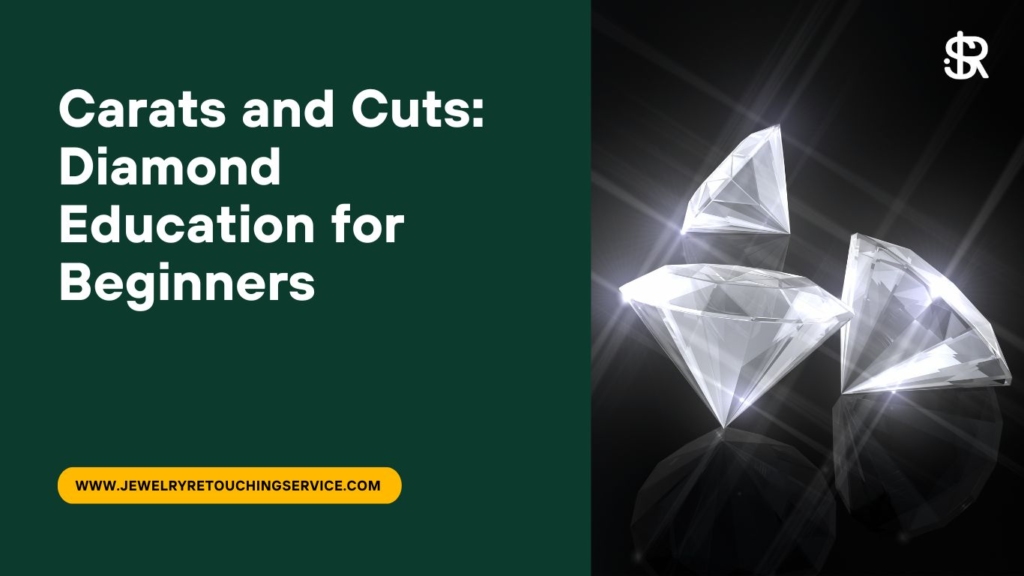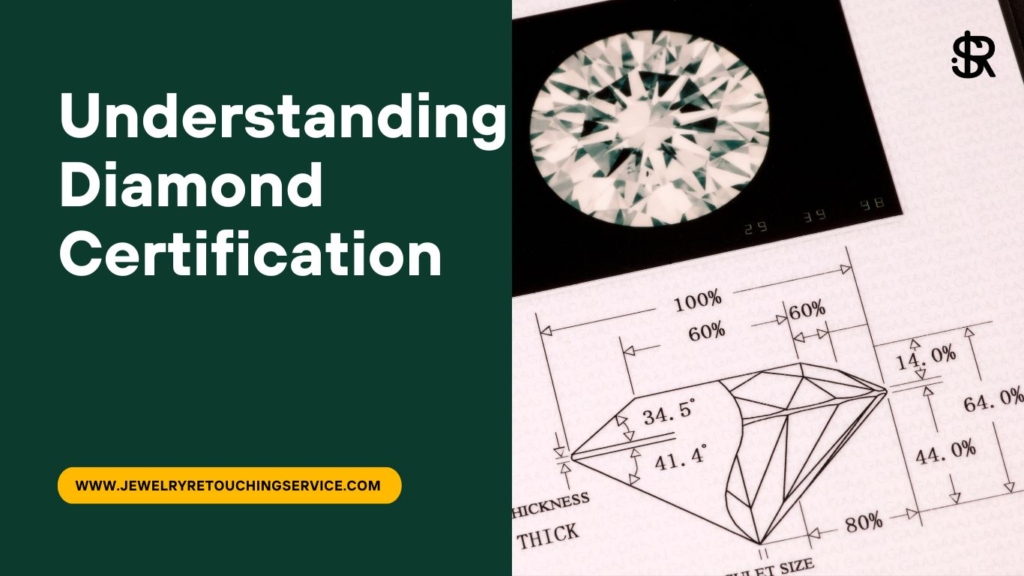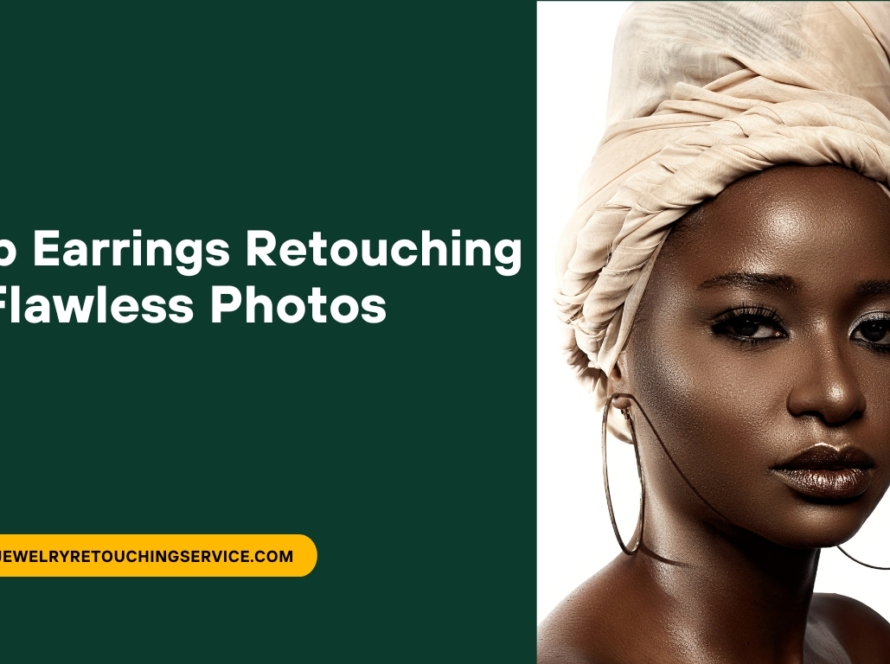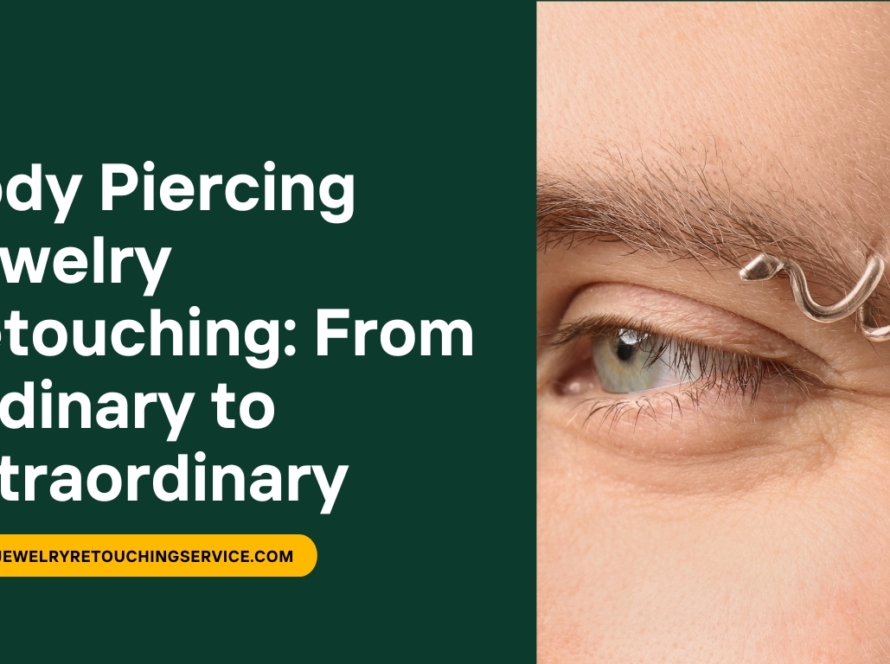The 4 Cs of Diamond Quality: Understanding Cut, Color, Clarity, and Carat Weight The 4 Cs are a set of standards used to evaluate the quality and value of diamonds. Cut refers to the diamond’s proportions and how well it reflects light. Color is based on how white or yellow a diamond appears. Clarity is determined by the number and size of inclusions or blemishes in the stone. Carat weight measures the diamond’s size and weight. Understanding these four factors is crucial to selecting a diamond that meets your desired level of quality and budget. Diamond Education for Beginners step by step guide.

Diamond Shapes and Cuts:
Choosing the Perfect Stone for Your Style and Budget Diamonds come in a variety of shapes and cuts, from classic round brilliant to trendy cushion and princess cuts. Each shape has its unique characteristics and can affect the diamond’s brilliance and fire. Choosing the right shape and cut can also impact the stone’s perceived size and value. By considering your personal style and budget, you can find a diamond that complements your taste and fits your financial goals.

Natural vs. Lab-Created Diamonds:
Pros and Cons of Each Option Natural diamonds are formed deep within the earth’s crust over millions of years, while lab-created diamonds are grown in a lab using advanced technology. Both options have their advantages and disadvantages. Natural diamonds have a timeless appeal and come with a sense of history and tradition. Lab-created diamonds, on the other hand, offer greater affordability and eco-friendliness. Understanding the pros and cons of each option can help you make an informed decision when buying a diamond.
Understanding Diamond Certification:
Why it Matters and What to Look For Diamond certification is a process that verifies a diamond’s authenticity, quality, and value. A reputable certification from a recognized gemological laboratory provides assurance that the diamond is genuine and accurately graded. Understanding the grading system and what to look for on a diamond certificate can help you avoid fraud and ensure that you are getting a fair price for your purchase.

The History of Diamond Mining and Production:
From Ancient Times to Today Diamonds have a long and fascinating history, dating back thousands of years to ancient civilizations in India and Africa. The discovery of diamonds in South Africa in the 19th century transformed the diamond industry and led to the creation of the modern diamond trade. Today, diamond mining and production remain a significant global industry, with a complex supply chain and ethical concerns.
How to Care for Your Diamond Jewelry:
Cleaning, Storage, and Maintenance Tips Diamonds are durable and resistant to scratching, but they still require proper care and maintenance to keep them looking their best. Regular cleaning and storage can help prevent damage and maintain their sparkle. Learning how to care for your diamond jewelry can extend its lifespan and keep it in excellent condition.
Diamond Scams to Watch Out For:
How to Avoid Getting Ripped Off The diamond industry is not immune to scams and fraud, and consumers must be aware of the most common tactics used by dishonest dealers. From artificially inflated prices to misrepresentation of diamond quality, there are many ways that consumers can be ripped off when buying diamonds. Knowing how to spot red flags and do your research can help you avoid being a victim of diamond scams.
The Emotional Value of Diamonds:
Why These Precious Gems Are So Coveted and Symbolic Diamonds have a powerful emotional and cultural significance, symbolizing love, commitment, and luxury. They have been used for centuries as gifts and symbols of status and wealth. Understanding the emotional value of diamonds can help you appreciate their beauty and significance beyond their financial worth.
Investing in Diamonds:
How to Buy and Sell with Confidence Diamonds can be a valuable and potentially lucrative investment, but it’s important to understand the risks and opportunities involved. Investing in diamonds requires knowledge of the diamond market, including trends in supply and demand, pricing, and quality standards. It’s crucial to work with reputable dealers and seek independent appraisals to ensure that you’re buying diamonds at fair market value. When selling diamonds, it’s essential to understand the current market conditions and have realistic expectations about pricing. Proper documentation and verification of diamond quality and grading can also help you sell with confidence and maximize your returns. With careful research and due diligence, investing in diamonds can be a rewarding venture.
Ethical and Sustainable Diamond Practices:
What You Need to Know About Conflict-Free and Eco-Friendly Options. Ethical and sustainable diamond practices have become increasingly important to consumers who want to ensure that their purchases do not contribute to human rights abuses or environmental degradation. Conflict-free diamonds are those that are mined and traded without fueling violence, exploitation, or other harmful practices. Eco-friendly diamonds, on the other hand, are mined and produced with minimal environmental impact, using responsible mining techniques and sustainable energy sources.
When looking for ethical and sustainable diamond options, it’s important to consider the diamond’s origin and certification. Certification from organizations like the Kimberley Process Certification Scheme can provide assurance that a diamond has been sourced responsibly. Other eco-friendly options include lab-created diamonds or recycled diamonds, which can minimize the environmental impact of diamond production. By choosing ethical and sustainable diamond options, consumers can make a positive impact and support responsible practices in the diamond industry.


